 |
||
|
||
| ||
More details about remaking RADEON 9500, 9500 Pro, 9700 and 9700 Pro Crusoe SE: Transmeta enters the embedded processor market Hitachi Global Storage Technologies officially launched along with four new hard drive series HP Alpha 21364 first test results About fake Athlon XP with 333MHz FSB Legend QDI releases S4LE motherboard on SiS651 Trident Microsystems announces new digital video processor XG SSGS-500: 5.1-channel sound system from Monster Game Telit announces two new MMS handsets: G80 and G82 MSI to ship K7N2G-ILSR on NVIDIA nForce2 IGP More details about remaking RADEON 9500, 9500 Pro, 9700 and 9700 Pro It’s not a secret that the yesterday’s information fromToday Overclockers.ru described all R300-based variants to orient you in their diversity.
The complete story with figures is here(in Russian).
Crusoe SE: Transmeta enters the embedded processor market Today Transmeta will announce its entry to embedded processor market along with the new Crusoe SE solutions. As their specifications ideally match the requirements in this segment I wonder why the company procrastinated for so long.The new Crusoe SE (Special Embedded) will offer performance from 667 to 933MHz in low and standard power versions with low operating temperatures. Crusoe´s LongRun power and thermal management feature is present in the SE model, allowing embedded systems to automatically scale operating frequency and voltage up or down, depending on processing needs. (According to the above, this might be the modified Crusoe TM5800, I guess). Crusoe SE will undergo more rigorous reliability testing to stand up to Transmeta´s guarantee of 24/7 operation for 10 years, and is it’s also guaranteed to be available in production for five years. Transmeta said the sample shipments have already started and approximately 20 embedded software and silicon vendors, including Microsoft Corp., MontaVista Software Inc., and Silicon Motion Inc. already show interest to these devices. Transmeta hopes the low cost will be a significant advantage of the new solution. Typical embedded processors range from $50 to $100, and Transmeta said volume pricing for its 667MHz Crusoe SE will start under $50. Transmeta mentioned about possible entry into the embedded market in October along with the announcement that Microsoft had certified Crusoe processors for the Windows CE.NET. Crusoe SE is designed to take advantage of the Windows XP Embedded OS as well. Source: EB News
Hitachi Global Storage Technologies officially launched along with four new hard drive series Today Hitachi, Ltd. posted the official press release about forming the new San Jose-based Hitachi Global Storage Technologies (HGST) by merging hard disk divisions of Hitachi and IBM.Actually, it’s not that new information except for the specified aims: HGST plans to release the industry-broadest hard disk lines for all segments from consumer 1" to server-class 3.5" solutions. Currently the new company has 5 development centers in USA in Japan, 8 production facilities in 7 countries, including USA, Japan, Philippines, Singapore, Mexico, China and Thailand. The staff totals for about 21.5 thousand people. But that’s only the beginning. Newly-born HGST has as once posted a number of press releases about new hard disk solutions. First, the company announced plans to release 4Gb 1" Microdrive solutions with expected availability in the Fall of 2003. These novelties will utilize the improved Pixie Dust Media and feature CompactFlash Type II interface. The next novelty from HGSÅ – 3.5" 15,000 RPM high-performance server-class hard disk drive — Hitachi Ultrastar 15K73, utilizing Pixie Dust, antiferromagnetically coupled (AFC) media and fluid dynamic bearing (FDB) motors. Ultrastar 15K73 specifications:
The next one is new 2.5" Travelstar A4K20 hard disk drives, designed specifically for automotive applications, with the expected availability in Q2 2003. Travelstar A4K20 specifications:
Finally, the new 1.8" Travelstar Compact Series C4K40 suited for a variety of mobile applications. Initially, Travelstar Compact Series C4K40 will be bundled with adapters for usual 2.5" form-factor. Travelstar C4K40 specifications:
HP Alpha 21364 first test results SPEC (Standard Performance Evaluation Corporation) posted the first test results for new-generation Alpha EV7 — 21364.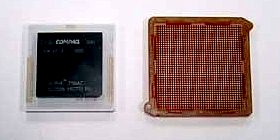 Alpha 21364 were featured in 16-processor Hewlett-Packard’s AlphaServer GS1280. Packed into 1443-pin LGA, 1150MHz Alpha 21364 feature 1.75Mb L2 ECC cache, 64Kb data and 64Kb L1 cache. The front side bus provides theoretial 19.2Gb/s. Alpha 21364 processor core features RDRAM controller (8 channels per CPU). The posted SPEC test results of 21364 processors were obtained in SPEC OMP2001 Suite, running OpenMP apps under Tru64 UNIX V5.1B (Rev 2650) + IPK.
 SPEC OMP2001 (16 threads, 16-way)  SPEC OMP2001 (8 threads, 8-way)  SPEC OMP2001 (4 threads, 4-way) Featured testbed configurations:
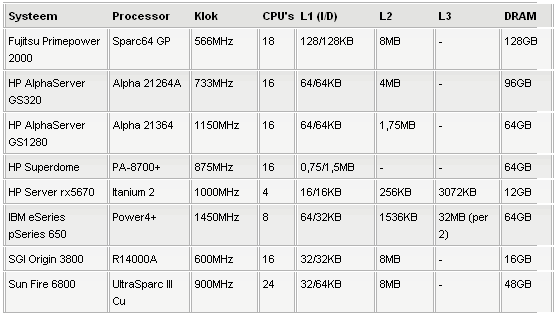 Source: Tweakers.net
About fake Athlon XP with 333MHz FSB AthlonXP.com posted a message, referring to local distributors (Monarch Computer, in particular), about the fake box Athlon XP, marked as 333 MHz FSB, that’s contrary to fact.Personally, I wouldn´t accuse AMD packing pipeline, I guess such re-marking more often happens outside production facilities. So, how do you distinguish a real Athlon XP with 333MHz FSB from a fake? The authors adduced two photos (fake to the left, correct marking to the right; click to enlarge).
P.S. Authors claim such fakes appeared after December 23, 2002. Source: AthlonXP.com
Legend QDI releases S4LE motherboard on SiS651 Legend QDI released S4LE motherboard on SiS651 chipset, designed for better airflow. Unlike the traditional design, CPU socket is turned 90° clockwise for better heat sharing in the processor area and in-case airflow optimization. Being mostly aimed at OEM companies and system builders, the motherboard has mATX form-factor. QDI S4LE (Superb 4L series) brief specifications:
Trident Microsystems announces new digital video processor Digital Media, the division of Trident Microsystems, announced new DPTV 3D PRO single-chip video processor. According to the press release, DPTV 3D PRO is designed for real-time digitized video rendering. Trident aims the new chip for projector, plasma, and LCD televisions.The sample shipments to OEM partners have already started. Samsung, Sampo and Vestel have already informed about intentions to release products on DPTV 3D PRO.
XG SSGS-500: 5.1-channel sound system from Monster Game Monster Game, the division of Monster Cable audio component maker, announced the new 5.1-ch. XG SSGS-500 5.1 system designed for Xbox and PS2 consoles.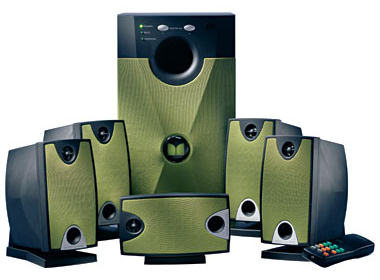 XG SSGS-500 5.1 specifications:
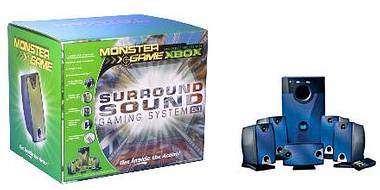 Source: Team Xbox
Telit announces two new MMS handsets: G80 and G82 Telit announced two new GSM handsets: Telit G80 and G82 supporting GPRS and MMS and designed by Giugiaro Design.Telit G80 has usual features including alarm clock, calendar, organizer (SyncML-enabled), calculator, games, measure converter, etc. It will have black or gray body.
 Model specifications:
Telit G82 is simpler, features lower-resolution/color display. The phone will have black or gray body with blue, black or gray buttons and front panel.
Model specifications:
Source: Mobil.cz
MSI to ship K7N2G-ILSR on NVIDIA nForce2 IGP In the nearest future MSI will start to ship new K7N2G-ILSR mobos on NVIDIA nForce2 to the European market. "ILSR" suffix means IEEE1394, LAN 10/100 and Serial ATA RAID.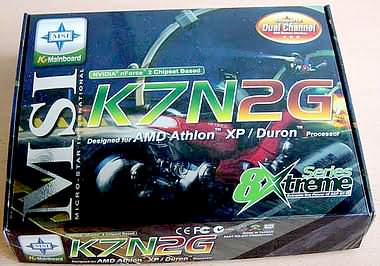 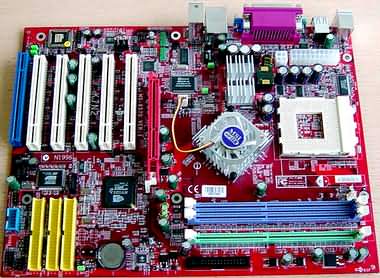 Brief motherboard specifications:
Source: INpact-Hardware
* — K7 AMD Athlon XP 3000+ and higher (Barton-based) require special cooling (<0.60°C/W thermal resistance) K8 roadmap:
Perhaps, AMD (after JEDEC adds DDR400 specs to DDR-I) will also raise FSB up to 400MHz (200MHz DDR). Source: Planet 3DNow!
Write a comment below. No registration needed!
|
Platform · Video · Multimedia · Mobile · Other || About us & Privacy policy · Twitter · Facebook Copyright © Byrds Research & Publishing, Ltd., 1997–2011. All rights reserved. |